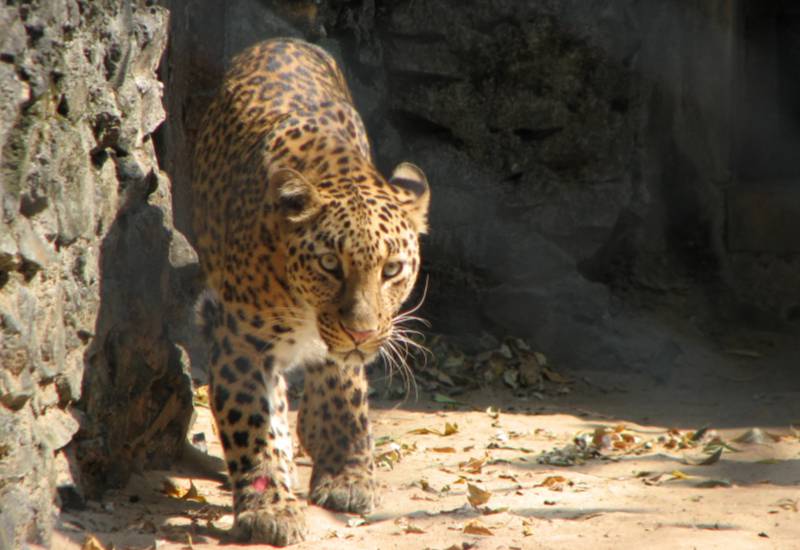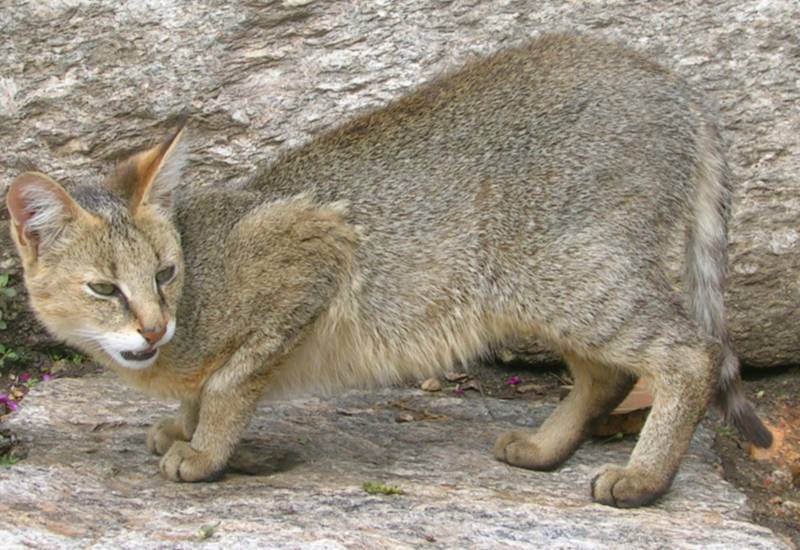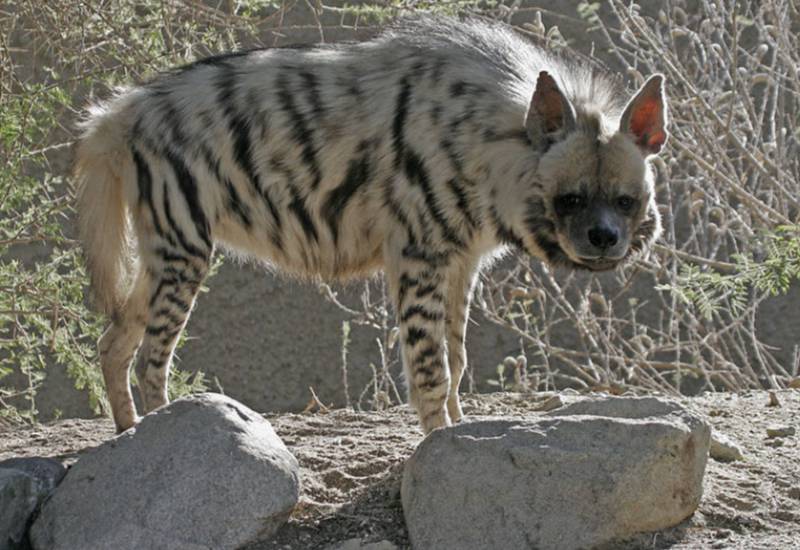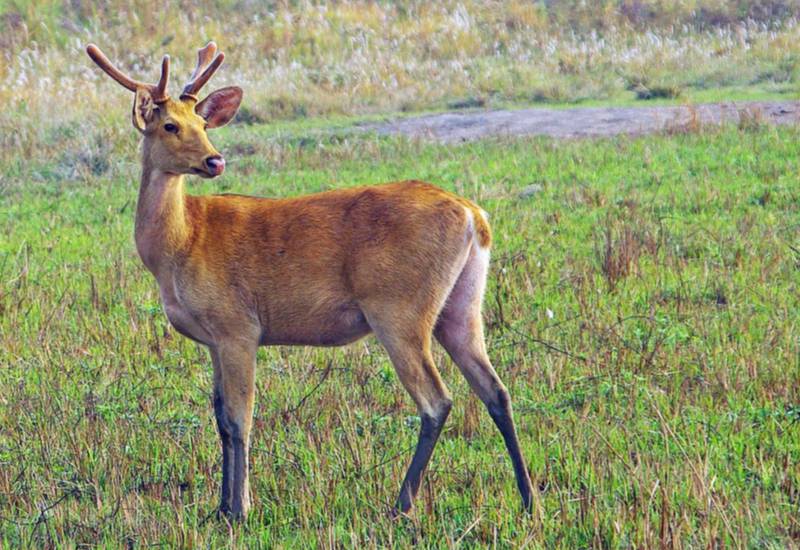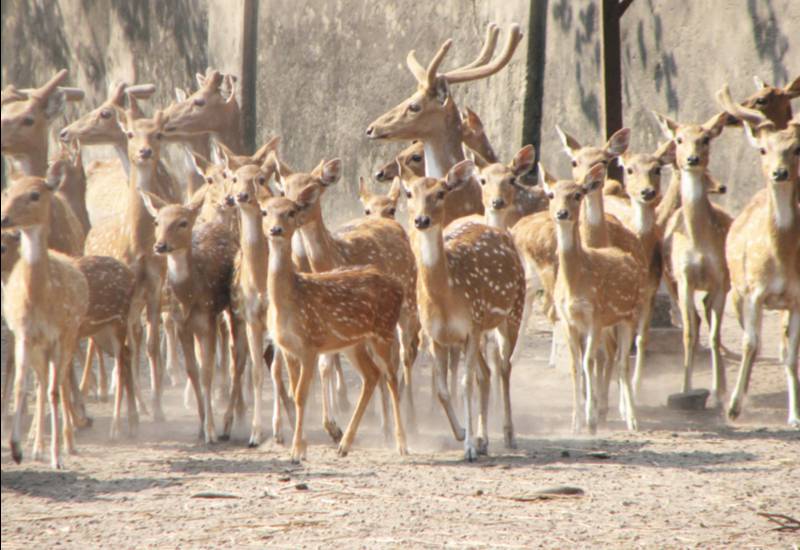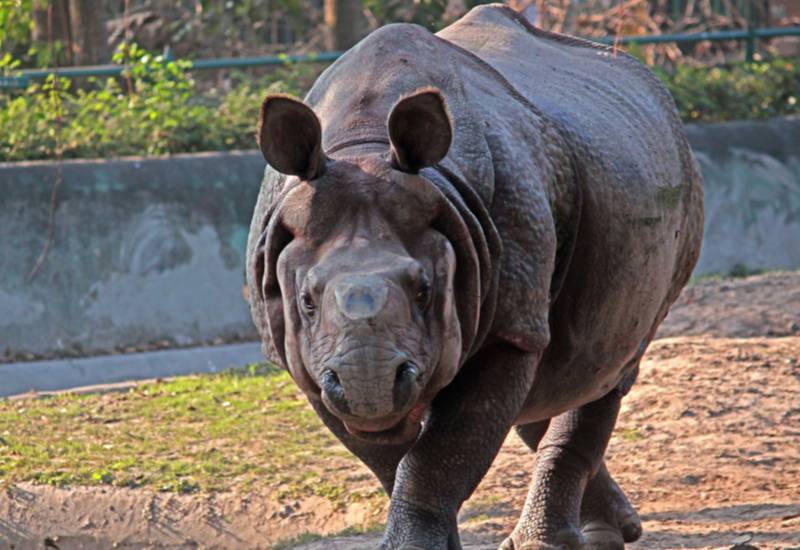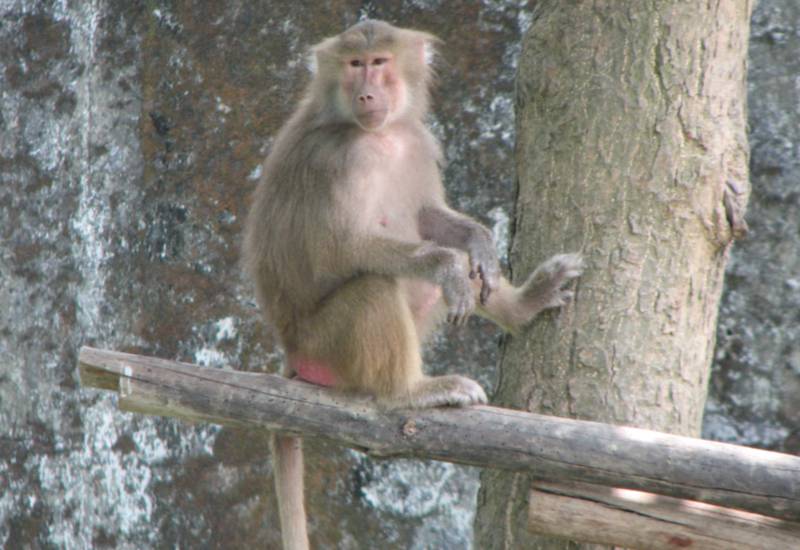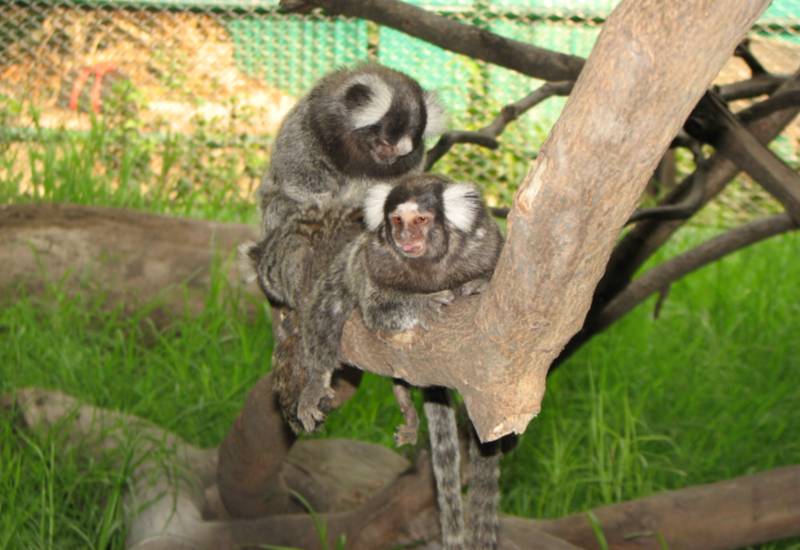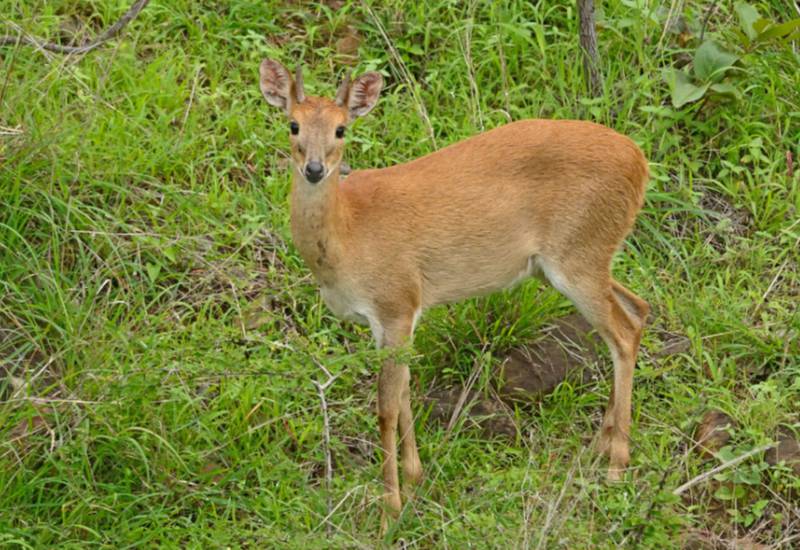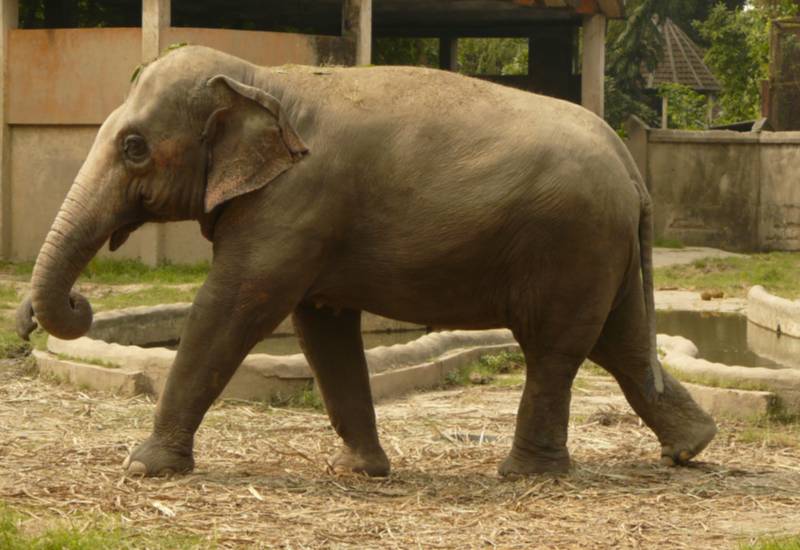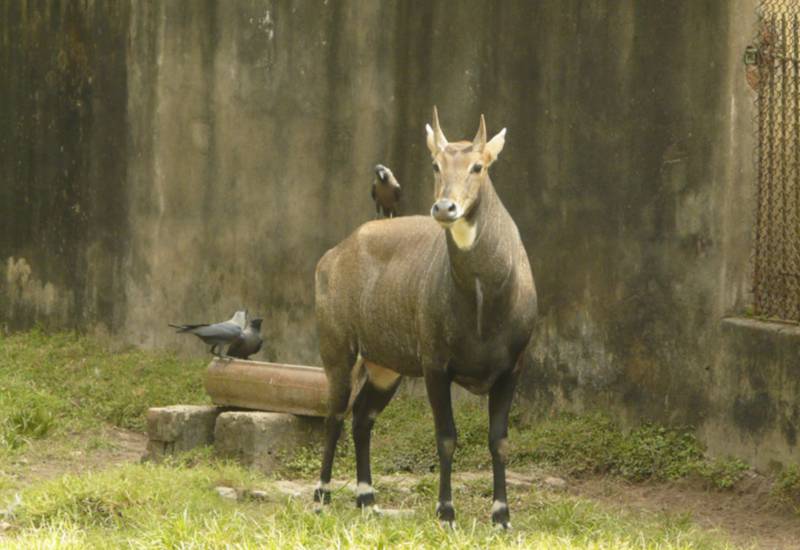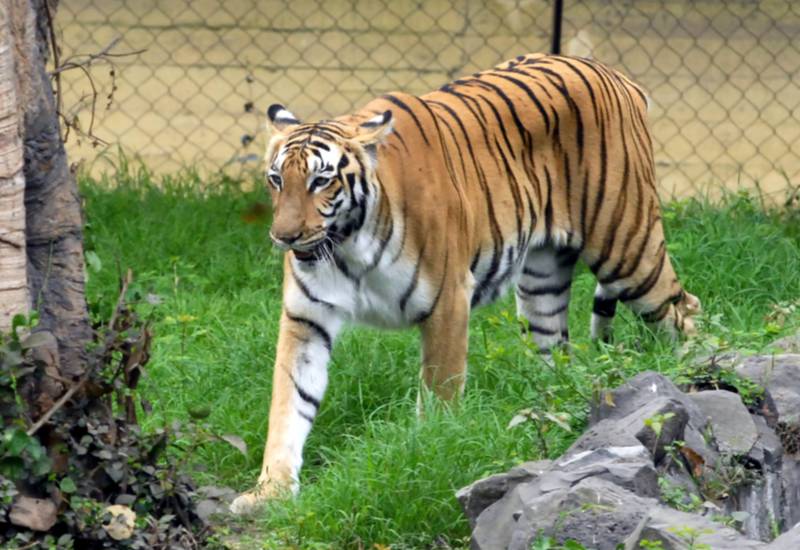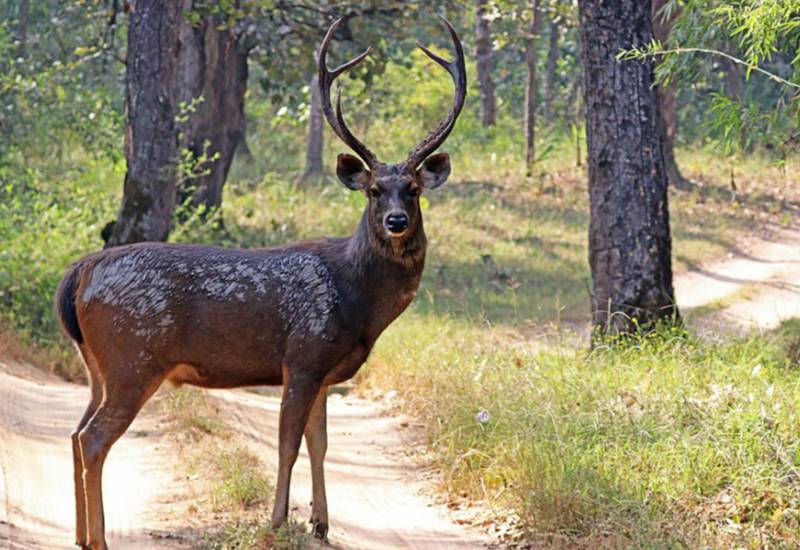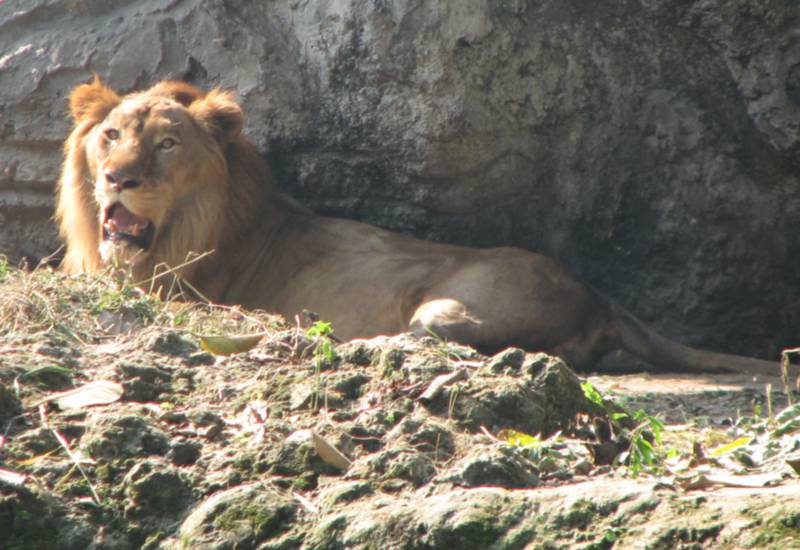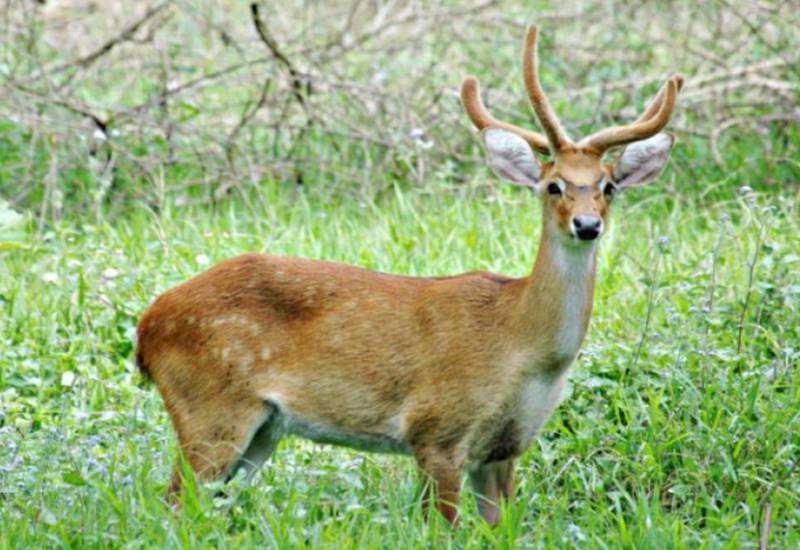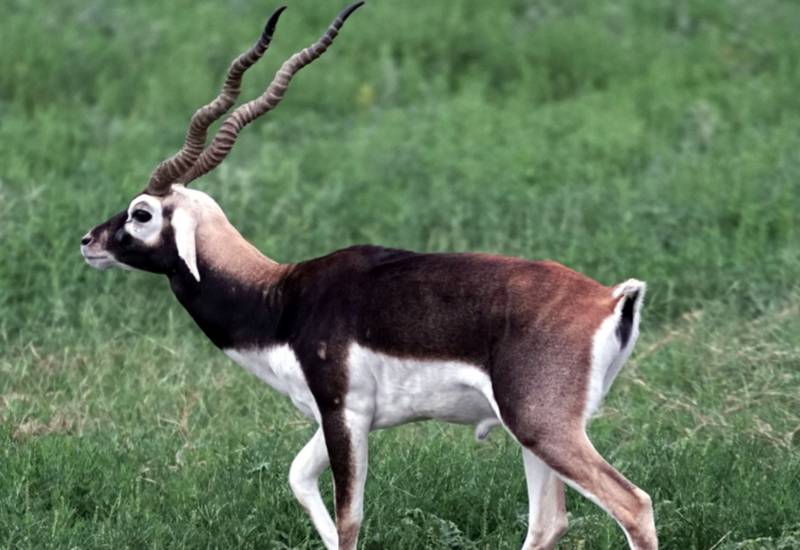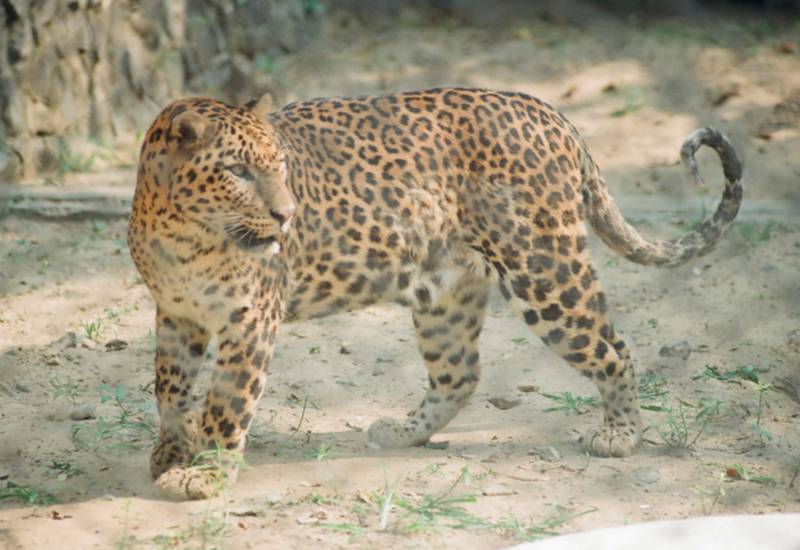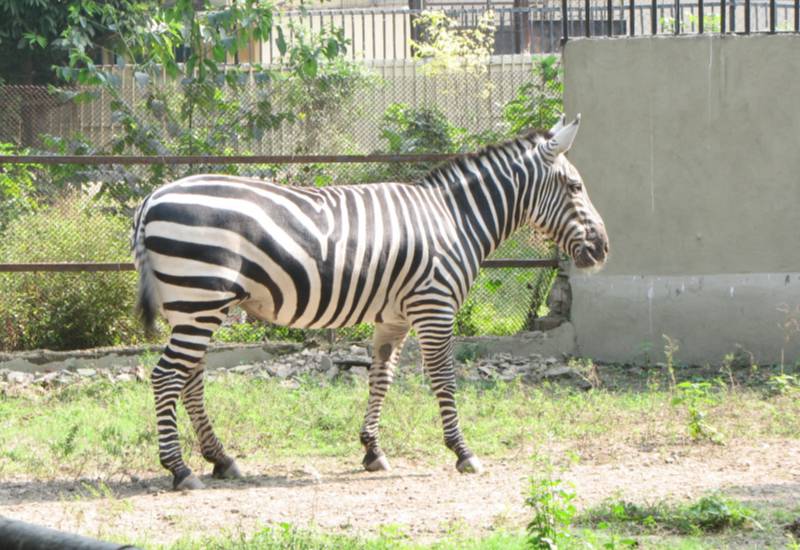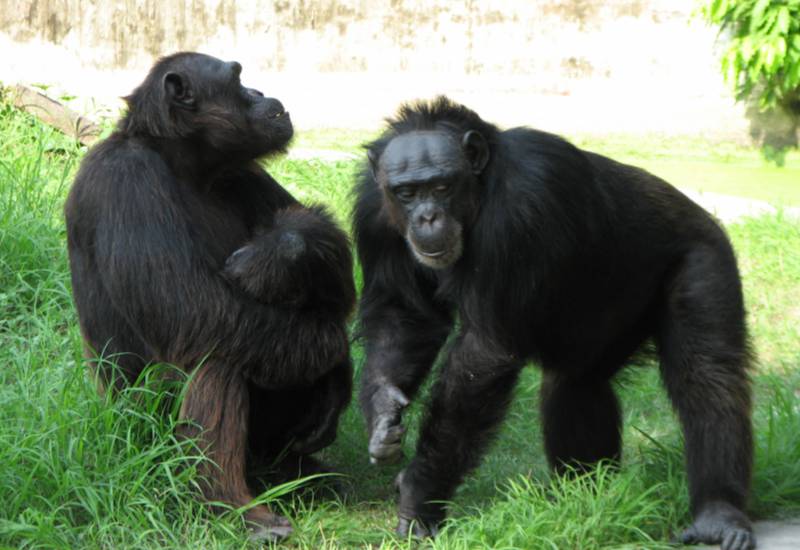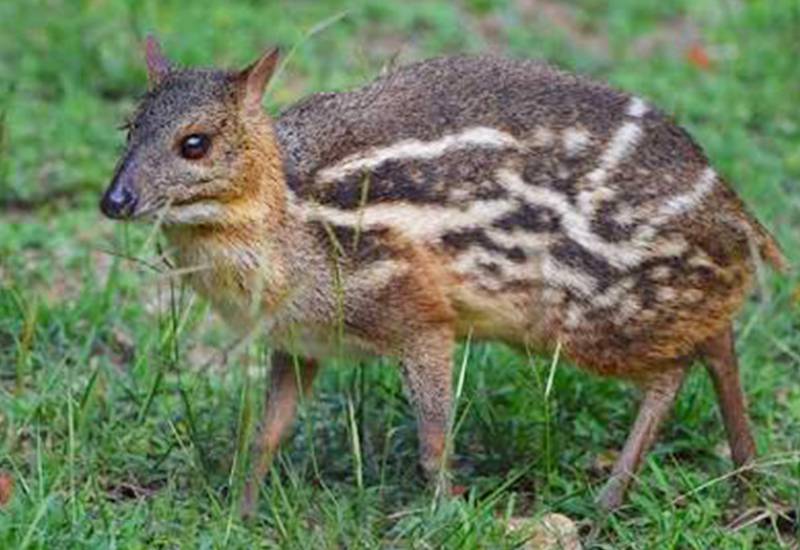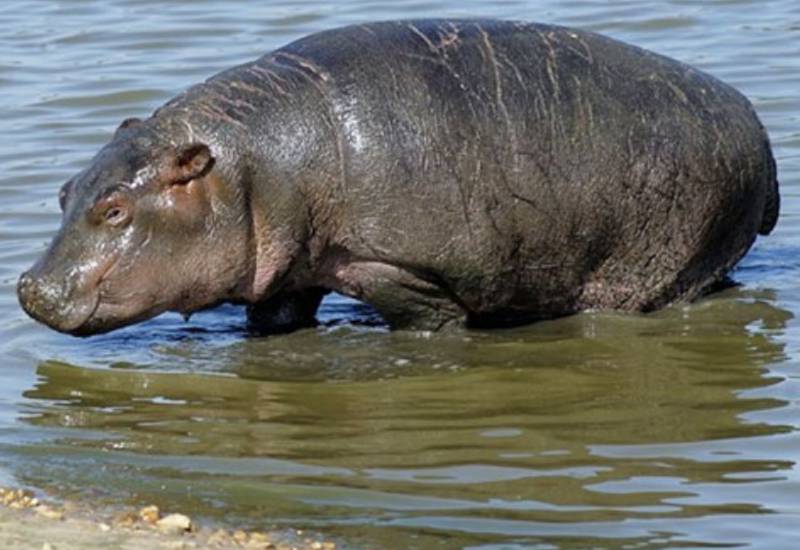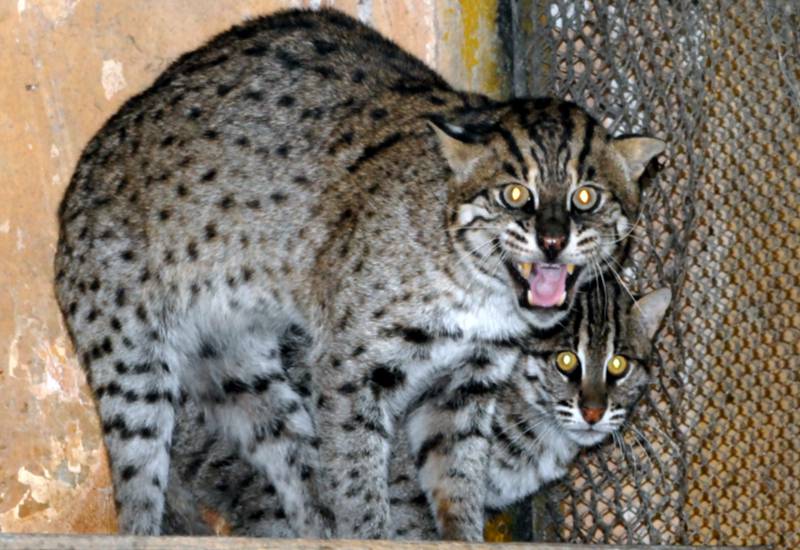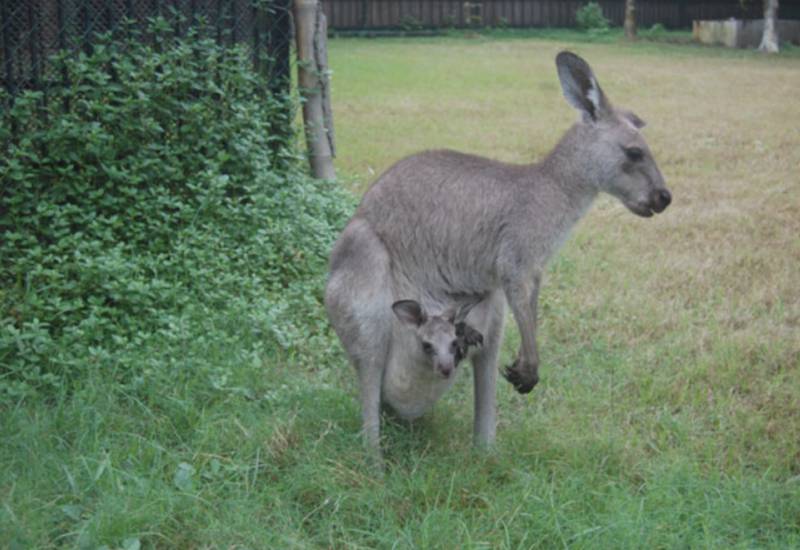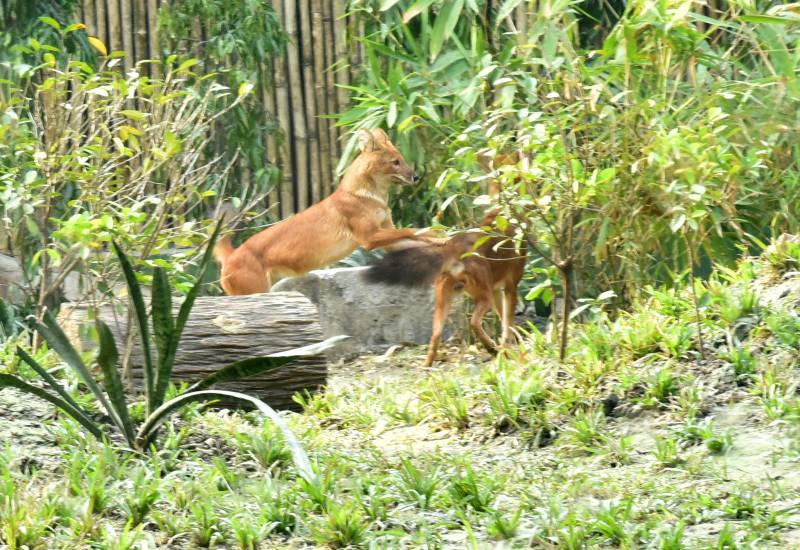- DISTRIBUTION : India Sri Lanka Bangladesh Pakistan Afghanistan.
- HABITAT : Grasslands woodlands scrub jungles and riverine forests. And also fringes of human settlements.
- BEHAVIOUR AND FOOD HABIT : The rasping call of the leopard is a familiar nocturnal call of the Indian jungle. They are good hunters of langurs up in the trees. They manage to coexist with tigers by hunting smaller prey and hauling carcasses up trees Carnivore prefers medium-sized prey with a body mass ranging from 10 –40 kilograms.
- FOOD SERVED HERE : Buffalo Meat.
- BRIEF DESCRIPTION :
1. BODY LENGTH- aries from 90 to 190 cm.
2. BODY WEIGHT- Within 37 to 90 kg male and 28 to 60 kg female
3. BODY COLOUR - Basically pale yellow to yellowish brown or golden except for the melanistic forms the coat is spotted and rosette spots fade toward the white underbelly and the insides and lower parts of the legs. - LIFE-SPAN : 20 to 24 years in captivity.
- THREAT : Habitat loss hunting and poaching over exploitation
- CONSERVATION STATUS : Scheduled I of WPA 1972 IUCN Red List 2016 3.1 Near Threatened

